Taiwan is planning to hold a series of disaster response drills next month, which would include trials of its earthquake warning system, the Ministry of the Interior (MOI) said yesterday.
Scheduled for Sept. 17 to 19 to coincide with the annual National Disaster Prevention Day, the drills would simulate a magnitude 8.5 earthquake in the Ryukyu Trench east of Taiwan, followed by a tsunami, Deputy Minister of the Interior Ma Shih-yuan (馬士元) said at a press conference.
The main event would be a three-day exercise in Yilan County, simulating large-scale rescue operations in the wake of an earthquake and tsunami, Ma said.
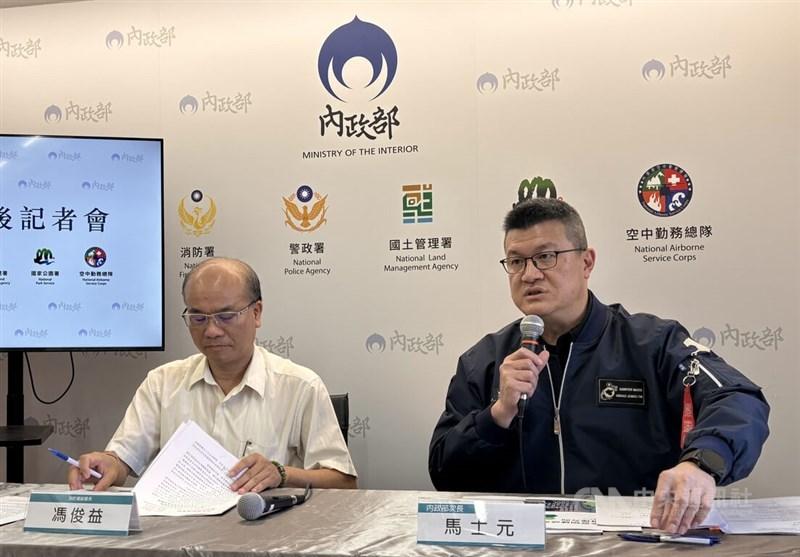
Photo: CNA
An earthquake rescue drill would also be held at Xinzhuang Sports Park in New Taipei City on Sept. 18 and 19, he said.
As part of the disaster response exercise, an earthquake alert would be sent to mobile phones throughout Taiwan at 9:21am on Sept. 19, advising people to “drop, take cover, and hold on,” Ma said.
At 9:30am on the same day, a tsunami warning would be issued to people in coastal areas of the country, and from 10:59 to 11:01am, all television stations would cut to the Public Television Service channel, where disaster prevention messages would be broadcast, he said.
Taiwan initiated National Disaster Prevention Day on Sept. 21, 2000, one year after a 7.3 magnitude earthquake struck its central regions, killing more than 2,400 people.
This year, the National Fire Agency would also conduct various disaster prevention drills and awareness campaigns from next Monday to Oct. 31, according to the agency’s Deputy Director-General Feng Chun-yi (馮俊益).
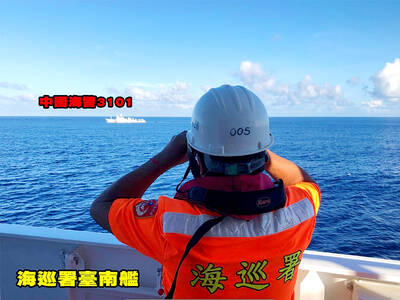
The Coast Guard Administration (CGA) yesterday said it had deployed patrol vessels to expel a China Coast Guard ship and a Chinese fishing boat near Pratas Island (Dongsha Island, 東沙群島) in the South China Sea. The China Coast Guard vessel was 28 nautical miles (52km) northeast of Pratas at 6:15am on Thursday, approaching the island’s restricted waters, which extend 24 nautical miles from its shoreline, the CGA’s Dongsha-Nansha Branch said in a statement. The Tainan, a 2,000-tonne cutter, was deployed by the CGA to shadow the Chinese ship, which left the area at 2:39pm on Friday, the statement said. At 6:31pm on Friday,
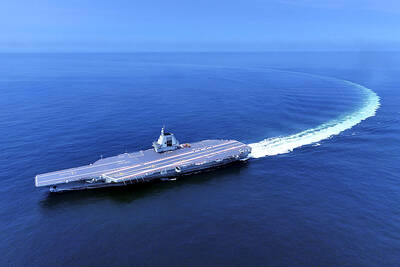
The Chinese People’s Liberation Army Navy’s (PLAN) third aircraft carrier, the Fujian, would pose a steep challenge to Taiwan’s ability to defend itself against a full-scale invasion, a defense expert said yesterday. Institute of National Defense and Security Research analyst Chieh Chung (揭仲) made the comment hours after the PLAN confirmed the carrier recently passed through the Taiwan Strait to conduct “scientific research tests and training missions” in the South China Sea. China has two carriers in operation — the Liaoning and the Shandong — with the Fujian undergoing sea trials. Although the PLAN needs time to train the Fujian’s air wing and
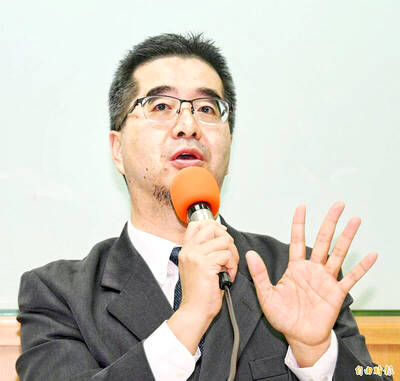
The American Institute in Taiwan (AIT) put Taiwan in danger, Ma Ying-jeou Foundation director Hsiao Hsu-tsen (蕭旭岑) said yesterday, hours after the de facto US embassy said that Beijing had misinterpreted World War II-era documents to isolate Taiwan. The AIT’s comments harmed the Republic of China’s (ROC) national interests and contradicted a part of the “six assurances” stipulating that the US would not change its official position on Taiwan’s sovereignty, Hsiao said. The “six assurances,” which were given by then-US president Ronald Reagan to Taiwan in 1982, say that Washington would not set a date for ending arm sales to Taiwan, consult
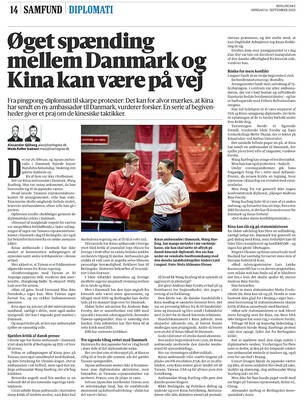
A Taiwanese academic yesterday said that Chinese Ambassador to Denmark Wang Xuefeng (王雪峰) disrespected Denmark and Japan when he earlier this year allegedly asked Japan’s embassy to make Taiwan’s representatives leave an event in Copenhagen. The Danish-language Berlingske on Sunday reported the incident in an article with the headline “The emperor’s birthday ended in drama in Copenhagen: More conflict may be on the way between Denmark and China.” It said that on Feb. 26, the Japanese embassy in Denmark held an event for Japanese Emperor Naruhito’s birthday, with about 200 guests in attendance, including representatives from Taiwan. After addressing the Japanese hosts, Wang